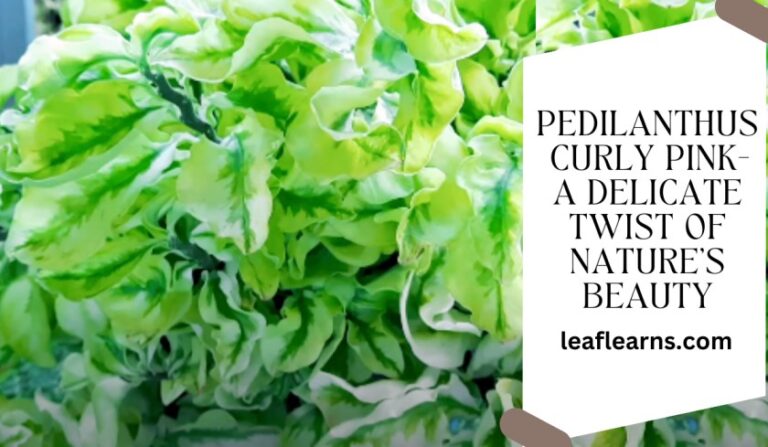Camille Dieffenbachia or Dumb Cane Care and Grow (2023)
The hybrid plant known as Dumb Cane Camille, or Camille Dieffenbachia is a member of the Araceae family and is considered to have originated in a tropical area. With broad, elliptical leaves that are 6 to 12 inches long and have a variegated green and cream color, this indoor beautiful houseplant grows to a medium height of around 1.5 to 3 feet.
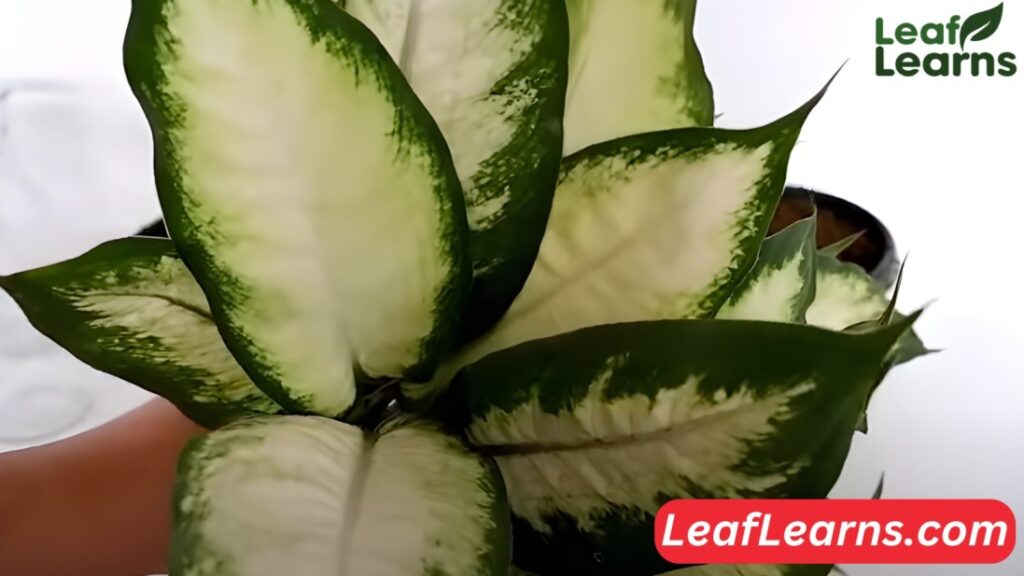
Contents
- 1 Characteristics
- 2 What’s Unique About Camille Dieffenbachia?
- 3 Top Care Tips
- 4 Care for Camille Dieffenbachia
- 5 How to Propagate Camille Dieffenbachia
- 6 Pruning
- 7 How to Repotting of Dumb Cane
- 8 How to Get Camille-Dieffenbachia to Bloom
- 9 Growth Rate and Size
- 10 Flowering and Foliage
- 11 Dumb Cane Appearance
- 12 Dumb Cane Fragrance
- 13 Underwatering
- 14 Overwatering
- 15 Overwintering
- 16 Common Pests
- 17 Plant Diseases
- 18 Problems and Solutions
- 19 Toxicity of Camille Dieffenbachia
- 20 Varieties/Types of Camille Dieffenbachia
- 21 Uses of Camille Dieffenbachia
- 22 Dieffenbachia Camille Guide
- 23 Dieffenbachia Camille: Aesthetic and Air-Purifying Guide
- 24 Conclusion
- 25 FAQs
Characteristics
Although Dumb Cane Camille rarely blossoms inside, it does well in indirect, bright to moderate light. Direct sunlight should be avoided, although. The right amount of care is using a well-draining potting mix, keeping the soil constantly wet (but not submerged), and watering sparingly throughout the winter.
It gets temperatures of 65 to 75 degrees Fahrenheit (18 to 24 degrees Celsius) and moderate to high humidity levels, watering the leaves as needed. Its health depends on regular feeding with a balanced liquid fertilizer and adding stem cuttings or air layering.
Pruning is required to keep the ideal shape and remove yellowing or damaged leaves. It’s essential to keep in mind that Camille Dieffenbachia is susceptible to pests including mealybugs, spider mites, and scale insects. It is also poisonous if consumed and irritating when contacted.
Given these factors, this plant remains a popular choice for rooms where it not only offers beauty and foliage but also helps to purify the air.
| Common Name | Dumb Cane Camille, Dieffenbachia Camille |
| Scientific Name | Dieffenbachia seguine ‘Camille’ |
| Family | Araceae |
| Origin | Hybrid plant, likely originated from tropical regions. |
| Plant Type | Indoor ornamental houseplant |
| Size | Medium-sized, typically 1.5 to 3 feet in height. |
| Leaf Color | Variegated green and cream-colored leaves. |
| Leaf Size | 6 to 12 inches in length. |
| Flower | Rarely blooms indoors; if it does, the flowers are small and inconspicuous. |
| Light | Indirect, bright to moderate light |
| Water | Keep the soil consistently moist but not soggy |
| Soil | Well-draining potting mix rich in organic matter. |
| Temperature | Ideal range: 65-75°F (18-24°C); avoid temperatures below 50°F (10°C). |
| Humidity | Prefers moderate to high humidity levels. Mist the leaves if needed. |
| Fertilizer | Balanced liquid fertilizer every 2-4 weeks during the growing season. |
| Propagation | Stem cuttings or air layering. |
| Pruning | Prune to remove yellowing or damaged leaves and to shape the plant. |
| Pests | Mealybugs, spider mites, and scale insects. |
| Toxicity | All parts of the plant are toxic if ingested |
| Uses | Used as an attractive and air-purifying indoor plant, adding greenery and elegance to interior spaces. |
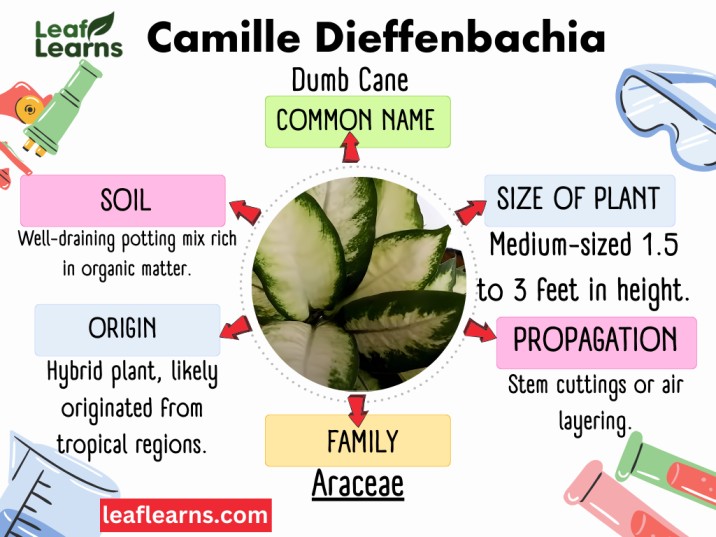
What’s Unique About Camille Dieffenbachia?
The attractive indoor houseplant Dumb Cane strikes out home to its cream and variegated green leaves. Its wonderful appearance and air-purifying qualities are exactly give it its special charm. Ideal for enhancing indoor air quality and home design.
Top Care Tips
Lighting Properly: Ensure that your Dumb Cane gets the correct quantity of light. Put it in a location with strong, filtered sunlight. Avoid direct sunlight since it might burn its leaves.
Water carefully, but avoid overdoing it. Keep the soil continually moist. When you can feel the top inch of the soil, it’s ready for water. Reduce watering over the winter to avoid root rot.
Maximum temperature: Make sure your plant has an easy atmosphere. Though Camille-Dieffenbachia can handle temperatures as low as 50°F (10°C), it prefers temperatures between 65 and 75°F (18 and 24°C).
Management of Humidity: This plant favors greater humidity levels. To keep the air surrounding it wet, spray the leaves from time to time or use a humidity tray.
Care and Pruning: Remove any yellowing or damaged leaves by regularly pruning your Dumb Cane.
Care for Camille Dieffenbachia
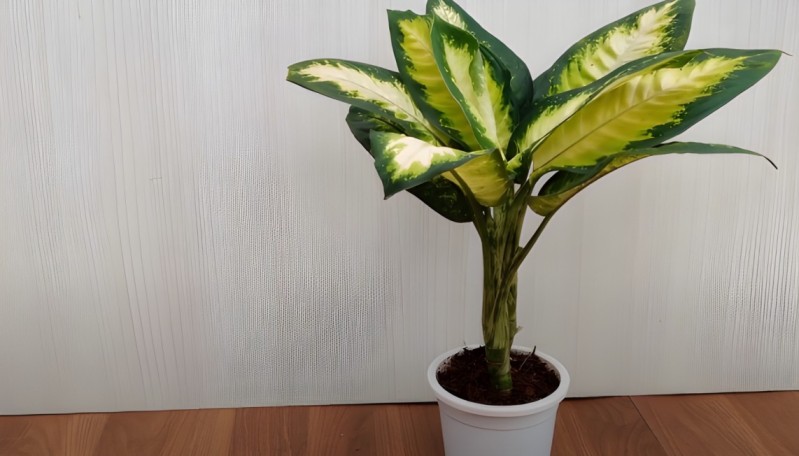
Light Requirement
Bringing up the proper lighting environments is essential for providing the best Dumb Cane care. Bright, indirect sunshine is ideal for this plant’s growth.
Stay out of the direct sun, which might damage the foliage.
You may ensure your Dieffenbachia’s healthy development and colorful attractiveness in your interior area by finding a location where it enjoys the soft, filtered light.
Water Requirements
Water is essential to the health of Camille-Dieffenbachia. Keep the soil constantly wet, but not watery, for plants to grow.
Achieving a balance is essential; stay away from over watering, which can cause root rot, and under watering, which results in drooping leaves.
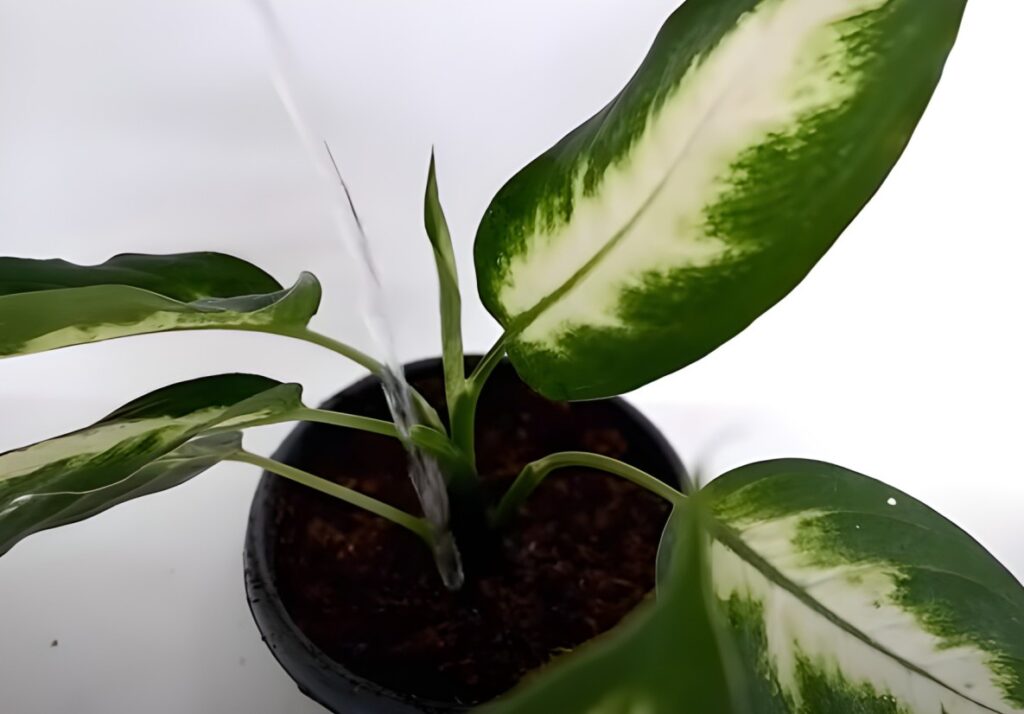
Changing the frequency according on the season, water when the top inch of the soil feels dry to the finger. Reduce watering all through the winter to avoid problems caused by moisture.
Soil Requirement
The correct soil must be chosen, according to Dumb Cane. Choose a potting mix that flows properly and is packed with organic stuff. This avoids water logging and maintains moisture balance.
Avoid dense soils because they might cause root rot.
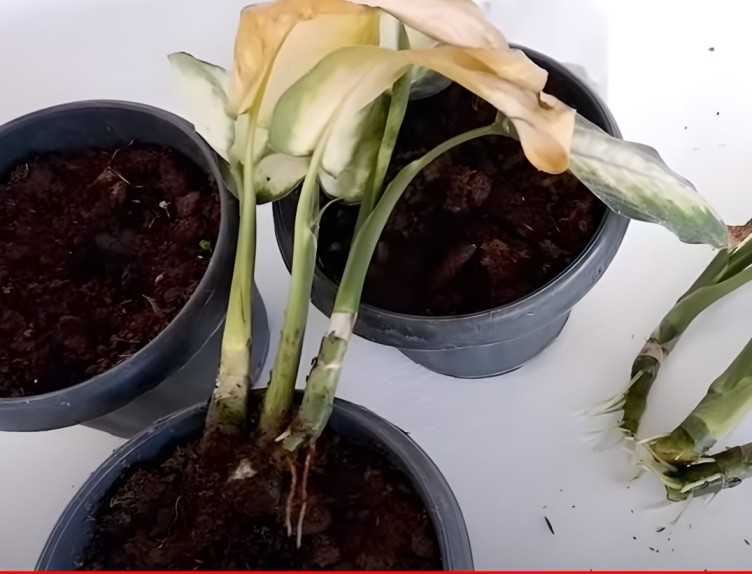
Temperature Requirement
Temperatures between 65 and 75°F (18 and 24°C) are excellent for Camille-Dieffenbachia indoor habitats. Avoid exposing this beautiful houseplant to temperatures below 50°F (10°C), which it can’t handle.
Humidity Requirement
For Dumb Cane’s health, it’s essential to keep the humidity levels at the right ranges. High to moderate humidity is ideal for this houseplant.
Consider using a humidity tray or spraying the leaves occasionally to satisfy its demands. The plant’s rich green will remain alive and healthy as long as there is enough humidity to keep the air around it wet.
Fertilizer Requirement
Regular fertilization is necessary for Camille-Dieffenbachia to grow well. Use a liquid fertilizer that is balanced and has the same amounts of nitrogen, phosphorous, and potassium.
During the growth season, which is normally from spring through the end of October, apply every 2-4 weeks. By providing the plant with nutrition, the leaves remain bright and healthy. Overfertilizing should be avoided as it might damage the plant.
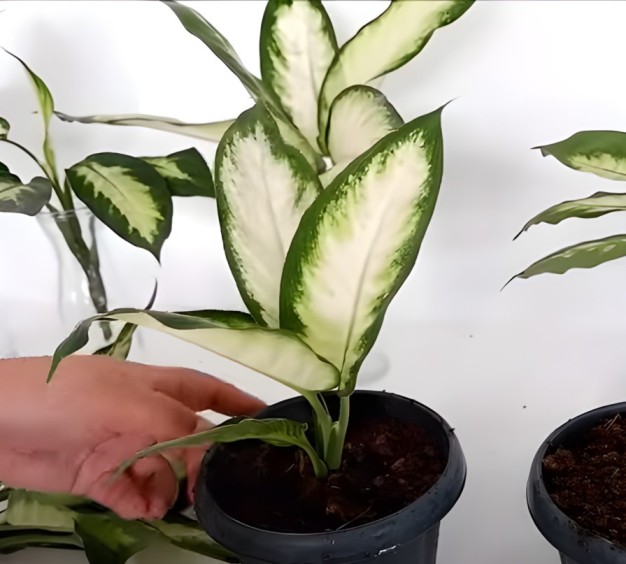
Potting Requirement
Choose an organic-rich, well-draining potting mix for planting Camille-Dieffenbachia. If you want to avoid overwatering, make sure the pot includes drainage holes.
Choose a pot that has a diameter that is 1-2 inches larger than the existing one. Every two to three years, repot, generally in the spring. Plant health and root health are promoted by proper potting.
How to Propagate Camille Dieffenbachia
Camille-Dieffenbachia can be propagated successfully through stem cuttings. Here’s how to do it:
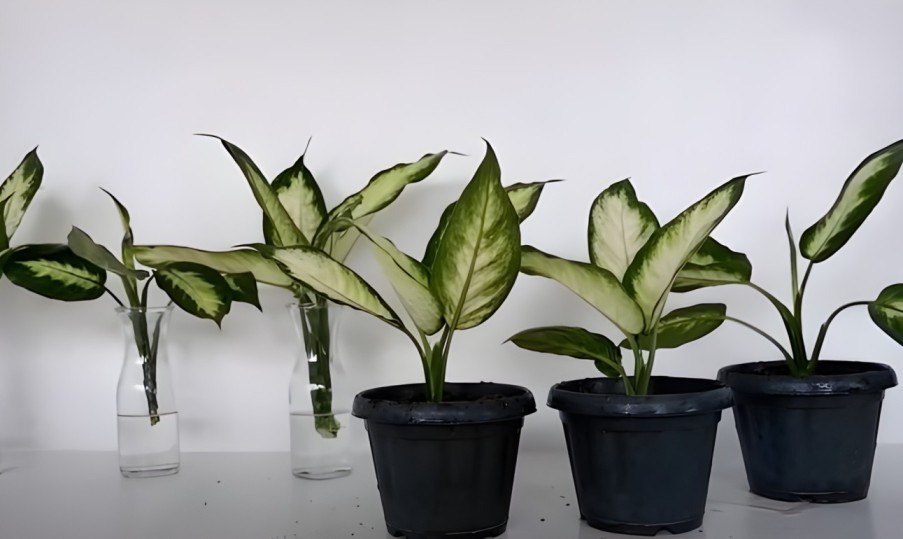
- Choose a Mature and Healthy Parent Plant: For the parent plant, pick a mature, healthy Dumb Cane. Make sure it’s pest- and disease-free.
- Get Your Tools Ready: An appropriate potting mix, a container for the cuttings, and a clean, sharp set of pruning scissors are required.
- Slice the stem: On the parent plant, look for a strong stem that has multiple nodes, preferably little bumps or joints where leaves and roots can develop.
- Make a 45-degree angle cut through the stem right below a node. The cutting need to be between 4 and 6 inches long.
- Let the Cutting Heal: Give the stem’s cut end a few hours to dry before using. When planting, this procedure helps stop rotting.
- Plant the Cutting: Place the stem cutting in a pot filled with potting soil that drains properly. Make sure the node is covered and plant it at least two inches into the ground.
- Provide Adequate Moisture: Water the cutting well, and then cover the container with a plastic bag or a clear plastic sheet to produce a little greenhouse effect. This will assist in preserving a high humidity level around the cutting.
- Location in Indirect Light Place the container containing the cutting in an area with strong, indirect lighting. Direct sunlight should be avoided since it might be too harsh for newly produced plants.
- Monitor and Upkeep: Maintain a constant moisture level in the soil that is not wet. Inspect the roots for growth, which may take a few weeks to a few months. When the cutting displays fresh growth, you’ll know it has established roots.
- Transplanting: You can move a cutting into a larger pot with regular potting soil for mature Dieffenbachia plants once it has grown roots and is producing new leaves.
Pruning
Care for Dumb Cane must include pruning. To keep the plant healthy and attractive, yellowing or damaged leaves must be removed.
Pruning your Dieffenbachia frequently promotes strong growth and makes it flourish. By doing this, you can make sure that your interior environment, which has this lovely houseplant, stays bright and green.
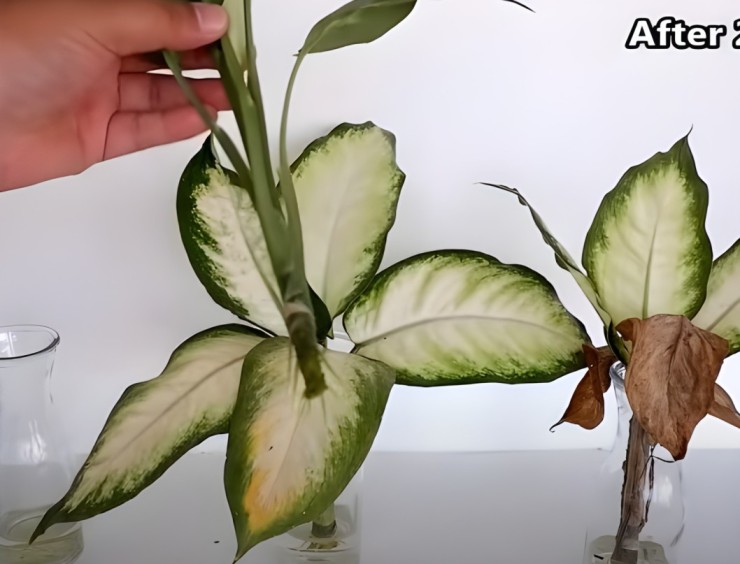
How to Repotting of Dumb Cane
- When the Dumb Cane grows out its pot or gets root-bound, repot it.
- Choose a container that is one size bigger.
- Use potting soil that drains properly.
- Untangle the plant’s roots, then carefully remove it and set it in the new container.
- Wash properly and keep up your monthly maintenance.
- For optimum development, repotter every two or three years.
How to Get Camille-Dieffenbachia to Bloom
Make sure Camille-Dieffenbachia is well-established and gets the right care to promote blooming. Though these houseplants are cultivated for their eye-catching foliage, indoor blossoms are rare.
Maintain optimal situations, including the right amount of light, humidity, and temperature, to potentially start flowering. Although blossoms may be few, the bright foliage yet serves as their major draw.
Growth Rate and Size
The Dumb Cane is renowned for its moderate growth, usually growing to a height of 1.5 to 3 feet.
It is valued for its steady increase rate. This indoor beauty is a low-maintenance choice for people looking for a stylish and measurable addition to their inside area because it takes its time to bloom.
Flowering and Foliage
Popular indoor plants like Camille-Dieffenbachia are famous for their eye-catching foliage rather than their blooms. Its elegant, variegated leaves offer beauty to any home with their lovely green and white coloring.
It occasionally produces little, inconspicuous flowers inside, but is coveted for its lovely, air-purifying leaves.
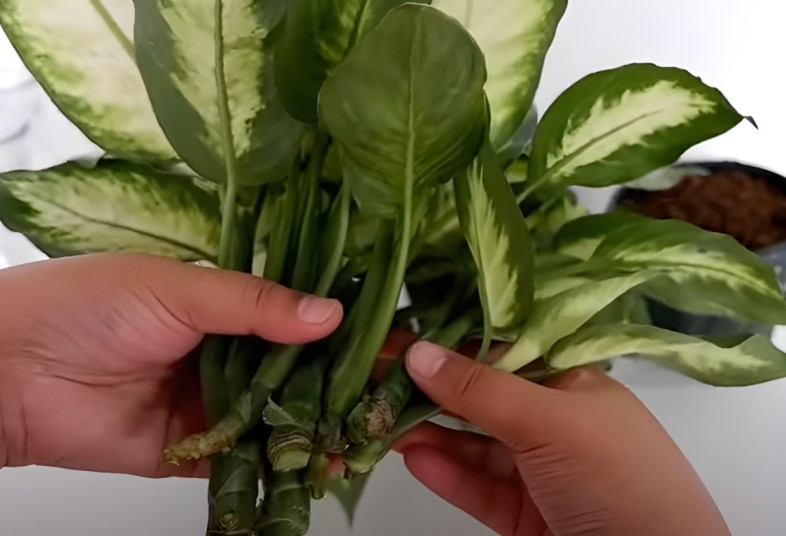
Dumb Cane Appearance
The Dumb Cane has beautiful variegated leaves in colors of white and green. Its 6 to 12 inch wide, elliptic foliage gives inside rooms a luxurious, tropical impression.
For those looking for an attractive and simple-to-care-for addition to their home or workplace decor, this lovely plant is a popular option.
Dumb Cane Fragrance
Typically this plant doesn’t have a strong smell. This indoor plant is coveted more for its attractive variegated leaves and air-purifying abilities than for its aroma.
It is an ideal choice for introducing foliage and elegance to inside settings because of its easy maintenance needs and lovely leaves.
Underwatering
Dumb Cane is a houseplant that might experience stress and health problems if it is not watered.
It’s essential to water when the top inch of soil feels dry to the touch in order to maintain the optimum soil moisture.
Leaf drooping, turning brown, and restricted growth can be brought on by consistently dry soil. This attractive plant blooms with consistent, balanced watering.
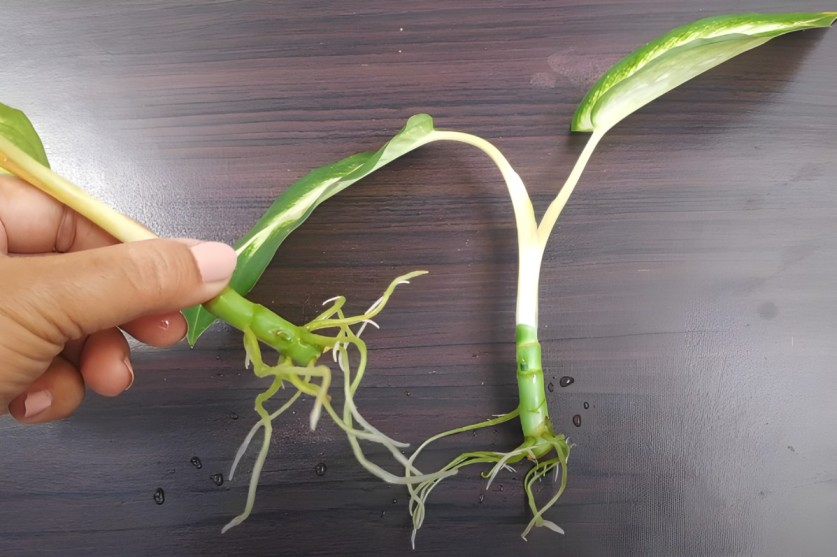
Overwatering
Camille-Dieffenbachia may die from being overwatered. Root rot and yellowing leaves can both be caused by excessive moisture.
Water just when the top inch of soil feels dry to the touch to prevent this. By avoiding water-related problems that might harm the plant’s development and appeal, proper watering promotes the health of the plant
Overwintering
This indoor beauty will flourish in the cooler months by “overwintering Dumb Cane”. Maintain temperatures between 65 and 75 °F (18 and 24 °C) and place it in a warm, brightly lit area away from draughts.
Reduce the amount of water you use and let the soil dry out between applications. Keep an eye out for pests and cut any weak leaves.
Common Pests
The danger to your Camille plant may come from pests. Mealybugs, spider mites, and scale insects are typical invaders.
By consuming the plant’s leaves and sap, these little disruptive individuals can cause damage. Regularly check your plant for pests, and if you find any, spray it with neem oil or a mild insecticide.
Plant Diseases
Common Diseases: Camille Dieffenbachia is susceptible to common plant diseases.
- Leaf Spot: Yellow or brown spots on leaves caused by fungal infections.
- Powdery Mildew: White, powdery patches on leaves due to fungal growth.
- Root Rot: Over watering leads to root rot, causing wilting and leaf drop.
- Prevention: Proper watering, well-draining soil, and good air circulation reduce disease risks.
Problems and Solutions
Problem: Yellowing Leaves
Solution: Check water levels, ensure proper drainage, and trim affected leaves.
Problem: Drooping Foliage
Solution: Adjust light exposure, water consistently, and provide occasional misting.
Problem: Pest Infestation (mealybugs, spider mites)
Solution: Isolate, remove pests manually, apply insecticidal soap, and maintain plant hygiene.
Problem: Brown Tips on Leaves
Solution: Maintain humidity, avoid over-fertilization, and prune affected areas.
Problem: Slow Growth
Solution: Ensure proper light, temperature, and feeding with a balanced fertilizer.
Toxicity of Camille Dieffenbachia
Toxicity for Human
Popular indoor plants like Dumb Cane offer a serious poisoning risk to people. When consumed, the plant’s entire poisonous makeup can result in serious intestinal discomfort, swelling, and problems.
It is essential to keep it out of the reach of both children and dogs in order to maintain a safe and pleasant indoor environment.
Toxicity for Cats and Dogs
Popular indoor plants such Dumb Cane are highly damaging to cats and dogs.
Any portion of this plant that is consumed might cause oral discomfort, profuse drooling, and difficulty swallowing. To guarantee the safety of your pets, keep this beautiful houseplant out of their reach.
Varieties/Types of Camille Dieffenbachia
Dieffenbachia seguine ‘Camille’: This is an extremely popular and traditional type, appreciated for its eye-catching variegated leaves with cream and green patterns. Because of its long lifespan and capacity to filter the air, it’s a fantastic choice for beginners.
Dieffenbachia seguine ‘Tropic Marianne’: Tropic Marianne has striking leaves that are dark green with bright white or light green stripes. It gives every home environment an air of elegance and contrast.
Dieffenbachia seguine ‘Tiki’: The particular leaf form and brilliant green color of “Tiki” are well known. It fits in smaller areas because to its modest size.
Dieffenbachia seguine ‘Exotica’: Large, oval leaves with beautiful green and white patterns are characteristic of the ‘Exotica’ cultivar. It is a striking addition to any space.
Dieffenbachia seguine ‘Sterling’: ‘Sterling’ is a standout cultivar with its silvery-white variegation. It’s a classy option for those seeking a unique houseplant.
Uses of Camille Dieffenbachia
Ornamental Beauty: This plant is a favorite for interior design because of its attractive variegated leaves, which improve the appearance of indoor environments.
Air purification: In addition to being aesthetically pleasing, it is excellent in cleaning indoor air, removing pollutants, and improving the general air quality in your home or place of business.
Reduced stress: Camille Dieffenbachia’s rich green foliage provides a relaxing impact that helps reduce tension and promotes a peaceful environment.
Due to its size and leaves, interior designers often use it to create visually stunning indoor landscapes in homes, workplaces, and commercial settings.
Gifts and Décor: It’s a popular gift choice for both seasoned and beginning gardeners because of its low care needs. Its flexibility is increased by frequent utilization of it interior décor and flower arrangements.
Dieffenbachia Camille Guide
Taking care of Dieffenbachia Camille is essential to ensure its growth and well-being. Proper watering is crucial for this plant’s health, and it’s important to find the right balance. Overwatering can lead to root rot, while underwatering can cause the leaves to droop.
In addition to watering, pay attention to the light requirements of Dieffenbachia Camille. Place it in a well-lit spot, but avoid direct sunlight, which can scorch its leaves. Pruning and repotting may be necessary as the plant grows, promoting a fuller, more vibrant appearance.
Dieffenbachia Camille: Aesthetic and Air-Purifying Guide
Dieffenbachia Camille is known not only for its beauty but also its air-purifying qualities. This plant is a compact variety, making it suitable for various indoor settings, such as apartments or offices. Its scientific name, Dieffenbachia camilla, reflects its unique characteristics.
Understanding these care instructions and the benefits of Dieffenbachia Camille will help you keep this plant thriving while enhancing your indoor environment. Whether you’re a seasoned gardener or a beginner, with the right care, your Dieffenbachia Camille will flourish and bring joy to your space.
Conclusion
A beautiful indoor houseplant with beautiful variegated foliage is the Camille Dieffenbachia. It is a common choice for home design since it not only improves the aesthetic appeal of your indoor area but also filters the air.
Interior designers frequently employ Camille Dieffenbachia’s rich green foliage to create visually beautiful indoor landscapes because it has a relaxing impact and helps with stress reduction.
Due to its low care needs, it’s also a well-liked gift option for gardeners of all skill levels and is commonly used in flower arrangements and interior design. To provide a secure and pleasurable interior environment, Camille Dieffenbachia should be kept out of reach of both people and dogs because to its toxicity.
FAQs
How do you care for Camille dieffenbachia?
Provide Camille Dieffenbachia with bright, indirect sunshine, wet but not soggy soil, temperatures between 65 and 75 degrees Fahrenheit (18 and 24 degrees Celsius), and moderate to high humidity levels. Pruning and fertilising should be done frequently, and you should exercise caution because all portions are poisonous if consumed, so keep it away from kids and dogs.
Is Dieffenbachia Camille indoor or outdoor?
Due to its susceptibility to low temperatures, Dieffenbachia Camille is mainly an indoor plant and is therefore best suited for indoor settings. It flourishes in your indoor environment as a classy and air-purifying accent.
Is Dieffenbachia Camille poisonous?
It is true that Dieffenbachia Camille is toxic to both people and animals. It’s necessary to use caution and keep the plant away from curious lips since all portions of it might irritate and pain if consumed.
What is the spiritual meaning of the Dieffenbachia Camille?
Unlike some other plants, the Dieffenbachia Camille doesn’t specifically have a spiritual significance, but its lush look and air-purifying abilities might represent energy, development, and purification in a living area.
Does dieffenbachia need full sun?
Dieffenbachia doesn’t need direct sunlight. It should be shielded from direct sunlight, which might harm its leaves, since it enjoys bright, indirect sunshine.
Do dieffenbachia like sunlight?
Dieffenbachia enjoys bright, indirect sunlight but not direct sun, which can scorch its leaves.
Can a dieffenbachia be kept in a bedroom?
It is possible to keep Dieffenbachia in a bedroom. As a result of its exquisite design and air-purifying capabilities, it is a popular option for indoor settings, especially bedrooms.
Does dieffenbachia purify the air?
Yes, Dieffenbachia is well renowned for its ability to filter the air. It improves the quality of the air in your home or place of business by helping to eliminate indoor contaminants.
Does Dieffenbachia flower?
Dieffenbachia can bloom, although it is uncommon for them to do so indoors. Instead of its rare blooms, this plant is more commonly appreciated for its lovely leaves.
Can I put a Dieffenbachia in a bathroom?
Dieffenbachia may be kept in bathrooms as long as it gets plenty of brilliant indirect light and isn’t in the harsh direct sunshine. This plant may thrive in a bathroom’s humid climate.
Is Dieffenbachia a good luck plant?
Dieffenbachia is not often thought of as a “good luck” plant, but its presence in your interior area may produce a nice and tranquil ambiance that could be interpreted as a type of good luck.

